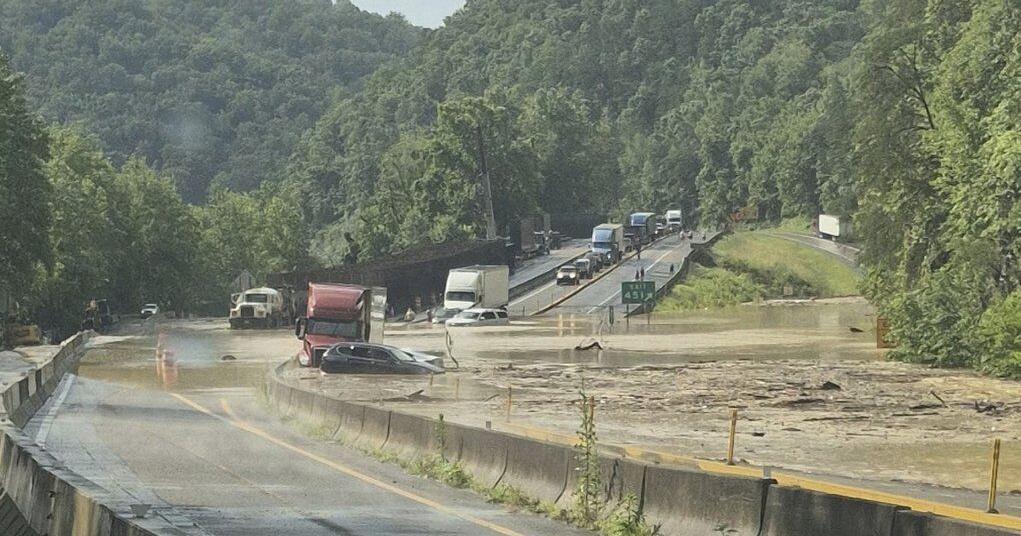I-40 Reopens Through the Great Smoky Mountains After Flooding and Rock Slide
The familiar hum of traffic has returned to a crucial artery of the Great Smoky Mountains. After days of closure that left travelers and locals alike searching for alternate routes, Interstate 40 through the Tennessee side of the Smokies is finally open again. The reopening brings a collective sigh of relief to communities dependent on this vital transportation corridor.
As someone who’s explored every nook and cranny of these ancient mountains for years, I’ve seen firsthand how the powerful forces of nature can reshape the landscape overnight. This recent closure is just another chapter in the ongoing dialogue between human infrastructure and the wild, unpredictable character of the Smokies.
What Happened Along I-40 in Hartford?
On Friday, crews successfully reopened a section of Interstate 40 that runs through the narrow corridor of the Great Smoky Mountains near Hartford, Tennessee. The closure had been necessary after heavy rainfall triggered both flooding and a significant rock slide that made the roadway impassable and dangerous for travelers.
Hartford, a small community nestled along the Pigeon River at the northeastern edge of the Great Smoky Mountains National Park, sits right along this crucial east-west corridor that connects North Carolina and Tennessee through the mountains.
Why This Corridor Is So Vulnerable to Closures
This isn’t the first time I’ve written about closures along this stretch of I-40, and it certainly won’t be the last. The interstate here threads through a geological wonderland – but one that comes with inherent risks.
The narrow passage through the mountains follows the contours of the Pigeon River Gorge, with steep rock faces towering above the roadway on one side and the river below on the other. This natural configuration creates a perfect scenario for three main hazards:
- Rock slides – The weathered rock faces constantly shed material, especially after freeze-thaw cycles or heavy rains
- Flooding – The Pigeon River can quickly overflow its banks during heavy precipitation events
- Limited alternate routes – The mountainous terrain offers few quick detour options
Impact on Local Communities and Travelers
When I-40 closes through the Smokies, the effects ripple outward. Local businesses in small communities like Hartford, Cosby, and Newport experience immediate impacts as the flow of travelers dwindles. Meanwhile, long-haul truckers and vacation travelers face frustrating detours that can add hours to their journeys.
The economic lifeline that connects Eastern Tennessee to Western North Carolina becomes severed, creating logistical challenges for everything from emergency services to everyday commerce.
The Engineering Challenge of Mountain Highways
Having watched the evolution of infrastructure in the Smokies over the years, I’m always amazed at the engineering feats required to maintain these mountain corridors. The reopening of I-40 represents countless hours of work by dedicated crews who must battle the elements while ensuring safety standards are met.
The Tennessee Department of Transportation (TDOT) regularly monitors vulnerable sections along this corridor, but the unpredictable nature of mountain geology means that preventative measures can only go so far. When major events like this recent rock slide occur, crews must work quickly to:
- Clear debris from the roadway
- Stabilize remaining rock faces to prevent additional slides
- Repair damaged road surfaces and drainage systems
- Ensure the entire corridor meets safety standards before reopening
What Travelers Should Know Going Forward
If you’re planning travel through the Smokies in the coming days, here are some practical tips I’ve learned from years of mountain journeys:
- While I-40 is now open, expect possible delays as final work continues
- Check TDOT’s SmartWay traffic information before departing
- Be prepared for changing weather conditions that could affect road safety
- Keep emergency supplies in your vehicle when traveling through mountain corridors
The Resilience of the Smokies and Its Communities
Every time I write about these closures, I’m reminded of the remarkable resilience shown by both the landscape and the communities that call these mountains home. The Great Smoky Mountains have weathered countless storms over millions of years, and they’ll continue to change and evolve long after our highways have crumbled.
The communities along this corridor have adapted to the rhythms of mountain life, including the occasional disruption when nature reminds us who’s really in charge here. Their ability to band together during these challenges speaks to the special character of Appalachian culture that continues to thrive in these hills.
Looking Ahead: The Future of I-40 Through the Smokies
As climate patterns continue to shift, bringing more intense precipitation events to the Southeast, we can expect these kinds of closures to become more frequent. Transportation authorities continue to explore long-term solutions for this vulnerable corridor, including enhanced monitoring systems, improved drainage, and more robust rockfall protection measures.
For now, though, we can celebrate the reopening of this vital connection through some of America’s most beautiful mountains – a testament to human ingenuity and determination in the face of nature’s awesome power.
For travelers planning to visit the Great Smoky Mountains National Park or drive through this scenic corridor, normal access has been restored, allowing for the continuation of summer travel plans through one of America’s most beloved natural treasures.

